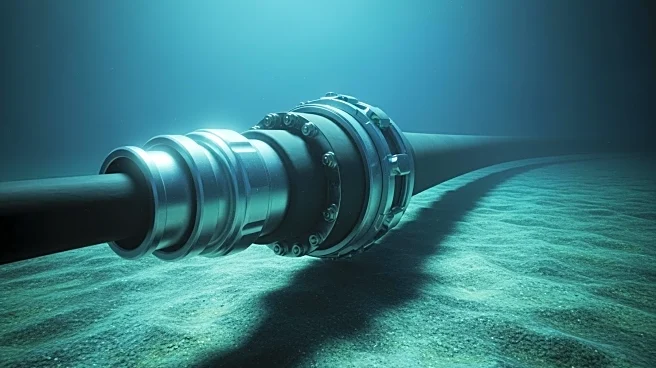What's Happening?
Danish power cable manufacturer and service provider NKT has successfully completed a crucial repair of a 220 kV high-voltage AC subsea export cable at the Beatrice Offshore Wind Farm in the Scottish Moray
Firth. The repair, which took 38 days, was necessitated by an unplanned transmission outage in April 2025 that reduced the wind farm's export capacity by 50%. This outage affected the transmission of renewable electricity to approximately 450,000 households in the UK. NKT utilized its adaptive rigid sea joint (ARSJ) technology to execute the repair, which was carried out using the North Sea Giant vessel from Ocean Installer. The Beatrice Offshore Wind Farm, operated by SSE Renewables, is one of Scotland's largest offshore wind installations with a capacity of 588 MW.
Why It's Important?
The successful repair of the subsea cable at the Beatrice Offshore Wind Farm is significant for several reasons. Firstly, it restores the wind farm's full capacity to transmit renewable energy, thereby supporting the UK's renewable energy targets and reducing reliance on fossil fuels. The repair also highlights the importance of having adaptable and rapid-response solutions for infrastructure maintenance in the renewable energy sector. NKT's use of its ARSJ technology demonstrates the capability to address emergency repairs efficiently, which is crucial for minimizing downtime and maintaining energy supply stability. This development underscores the critical role of technological innovation in supporting the growth and reliability of renewable energy infrastructure.
What's Next?
Following the successful repair, the Beatrice Offshore Wind Farm is expected to resume full operations, contributing to the UK's renewable energy output. The incident may prompt other operators to evaluate their infrastructure's resilience and consider investing in similar rapid-response repair technologies. Additionally, the repair could influence future policy discussions on the maintenance and upgrading of renewable energy infrastructure, potentially leading to increased investment in technology that enhances the reliability and efficiency of energy transmission systems.











